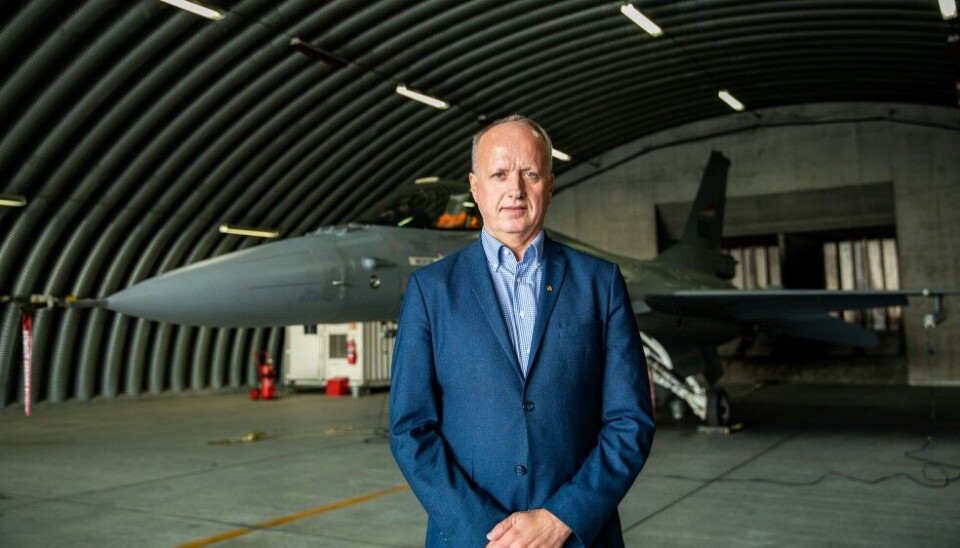
U.S. surveillance jet makes first mission up to northern Finland
Unlike Norway, which has self-imposed restraint on NATO activity near its border with Russia, Finland is now opening its skies for US intelligence flights along the eastern frontier.
The Finnish Armed Forces pre-announced the U.S. flight and made a statement saying “There have been no changes in Finland’s military security situation or environment in the recent past. Flight operations with international partners are art of normal bilateral and multilateral cooperation.”
However, Thursday’s flight was all but normal. This is the first time in history that a U.S. RC-135 Rivet Joint made a sortie inside Finnish airspace.
The plane, which took off from Mildenhall Air Base north of London, first flew over the Baltic States before entering Finnish airspace east of Helsinki. The large reconnaissance aircraft continued north all along the border with Russia.
Unlike when Russian military aircraft are flying over international airspace in Europe, the U.S. RC-135 had its transponder system turned on, making it visible even to public air traffic tracking systems like FlightRadar24.com.
A few kilometers inside the Arctic Circle, the American aircraft turned 180 degrees and followed the same path south. The northernmost part of the flight crossed over Rovaniemi airport, home to Lapland Air Command which is in charge of Finland’s air defense and surveillance in the north.
As previously reported by the Barents Observer, Rovaniemi Air Base will be the first to receive new F-35 fighter jets as Finland starts replacing the current fleet of F/A-18 Hornets in 2026.
Military expert Per Erik Solli with the Norwegian Institute of Foreign Affairs’ research group on security and defense says the flight was significant as NATO “now can use the airspace over mid- and northern Finland to collect information about the Kola-base complex area.”
Russia’s Kola Peninsula is home to Putin’s fleet of ballistic missile submarines, multi-purpose submarines with long-range cruise missiles, and supersonic bomber planes.
Real-time monitoring
The RC-135 Rivet Joint carries monitoring sensors supporting NATO intelligence with near real-time on-scene electronic warfare signals from inside Russia. Onboard instruments can listen to military communication as well as detect Russian air defense radars and other signals. The aircraft are frequent visitors to airspace over the Black Sea, in the Baltics around Kaliningrad, and up north, over the Barents Sea.
Simultaneously as the U.S. surveillance jet made its first flight over Lapland south of the Kola Peninsula on Thursday, Finland’s NATO membership took a significant step forward with the Turkish parliament’s foreign affairs committee unanimously approving the Nordic country’s accession to the alliance.
For NATO, having Finland now opening its airspace for so-called ISR missions (Intelligence, surveillance and reconnaissance) provides for a better understanding of possible changes in Russia’s military posture in the north.
U.S. and British surveillance planes can now keep a better eye on movements in and around the strategically important Kola Peninsula.
More to come
“The flights show a mutual commitment to developing defense cooperation,” the Finnish Armed Forces said.
“Similar flights in Finnish airspace will be carried out in the future as well with different types of aircraft, both unmanned and manned,” the statement reads.
Per Erik Solli, himself a former F-16 fighter jet pilot with years of experience in the cockpit in the skies above the Arctic Circle, says there has also been an adjustment regarding Norway’s geographical restrictions for other NATO members’ intelligence gatherings flights.
“Allied ISR aircraft flying missions far east into the Barents Sea have since the Cold War and until recently flown from bases in Europe, mainly from UK, and transited in international airspace outside Norway. Last year these types of flights were permitted to fly over mainland Norway,” Solli says to the Barents Observer.

Self-imposed restraints
It was in November last year an RC-135 Rivet Joint got permission from the Defense Ministry in Oslo to fly inside Norwegian airspace en route to the skies just north of Russia’s important submarine bases near Murmansk. The plane, however, did not fly over eastern Finnmark, the region of Norway bordering Russia. Instead, it flew to about the North Cape, and turned east first after entering international airspace over the Barents Sea north of the Porsanger fjord, the Barents Observer reported.
All since Norway became a NATO member in 1949, the country has tried to balance its security policy towards the Soviet Union (now Russia) with self-imposed restraints so as not to provoke the neighbor it shares a land- and maritime border with up north.
With Russia’s war in Ukraine, the entire security landscape in Europe is now, however, dramatically changing.
“It will be interesting to see if Finland and Sweden entry into NATO will impact Norway’s national rules and regulations for allied flights in the High North and if a common regional approach will emerge,” says Per Erik Solli.















